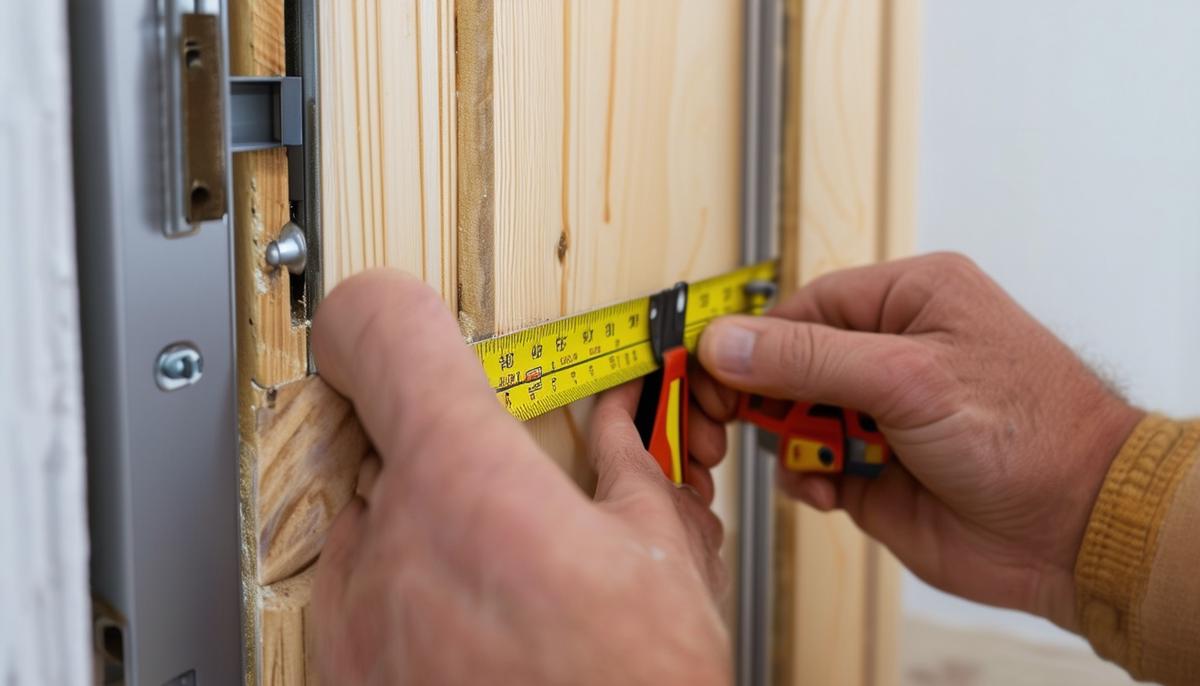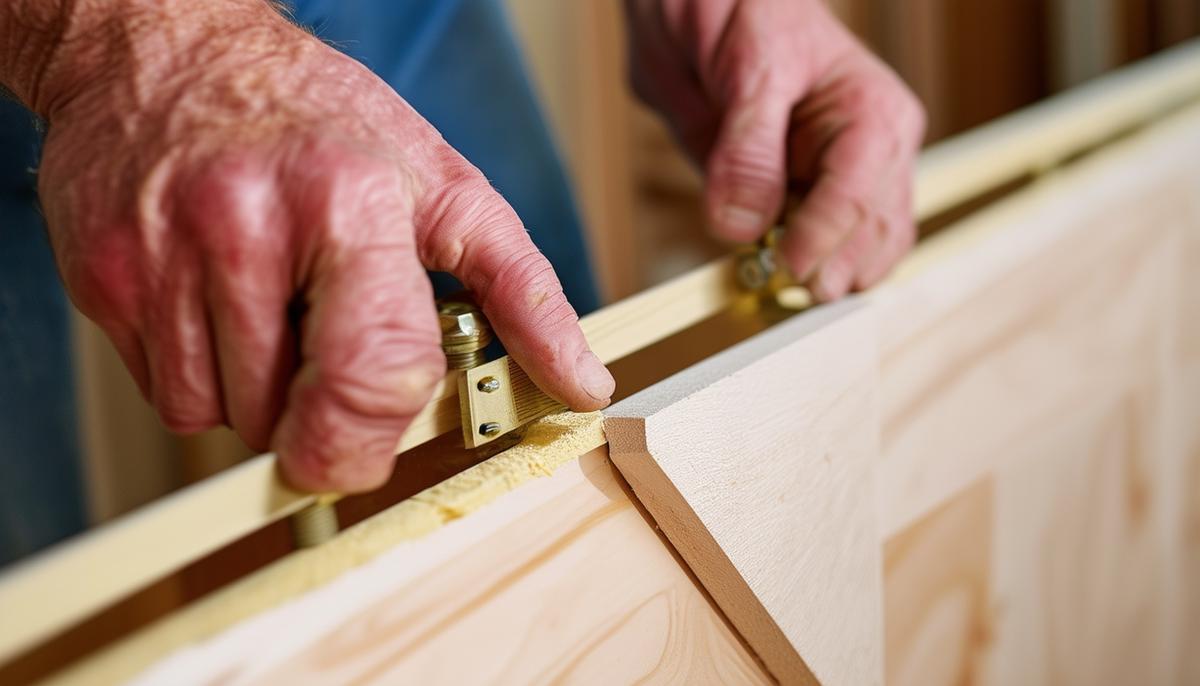Prepare the Rough Opening
To prepare the rough opening for your pocket door, the width should be twice the width of your door plus an extra inch. The height should accommodate the track and rollers, with an additional 4 ½ inches added to the door height. Ensure there's enough floor clearance for your flooring material plus about ⅜ to ½ inch for smooth operation.
Locate and remove any studs in the rough opening area using a stud finder and reciprocating saw. If unsure about load-bearing studs, consult with a contractor. Cut the header to the width of your rough opening and attach it securely, ensuring it's level.
Snap a chalk line or use a straight edge to mark a line on the floor even with the side jambs for precise frame centering. Install the floor plate along the marked line, securing it with screws to provide a solid foundation for the pocket door frame.

Install the Header and Track
Cut the header board to the precise width of your rough opening and secure it to the top using screws or nails, ensuring it's level. A level header is crucial for a properly functioning pocket door.
Measure and cut the aluminum track to match the width of your door, using a metal blade for precise cuts. Mount the track to the center of the header, following the manufacturer's instructions and checking for level.
Attach the floor brackets that come with your pocket door kit as instructed to keep the bottom parts of the steel-reinforced split studs in place. Use chalk lines to guide the placement of these brackets and anchor them securely into the floor.

Assemble and Install Pocket Door Frame
Begin by laying out all the frame pieces according to the kit instructions. Steel-reinforced split studs, a top track, screws, and brackets are the main components.
- Assemble the frame on the floor, connecting the split studs to the top rail while following the manufacturer's guidelines.
- Insert the assembled frame into the rough opening, ensuring a snug fit against the header.
- Secure the top of the frame to the header using the provided screws, checking for level.
- Align the frame with the chalk lines on the floor and secure the bottom to the floor plates.
- Ensure the frame is plumb, meaning it isn't leaning forward or backward.
- Reinforce the connection points at the header, floor plates, and frame sides with additional screws for added stability.

Finish and Mount the Door
Cut drywall pieces to fit around the pocket door frame and secure them using screws every 12 inches, avoiding areas where the door will slide. Apply joint compound to the seams and screws, sanding it down to a smooth finish once dry.
Paint the patched area, allowing it to dry completely before proceeding. Measure and cut the door trim to fit around the opening, securing it with finishing nails.
Attach the rollers to the top of the door slab according to the kit's instructions. Slide the door onto the track, ensuring smooth operation. Check the door's alignment by sliding it fully open and closed, making adjustments to the roller height or alignment if necessary.
Install any door pulls or latches that came with your kit, following the manufacturer's instructions and aligning the hardware carefully.

Precision and patience are key to a successful pocket door installation. By following each step carefully and paying attention to detail, you'll create a seamless and functional addition to your space. Proper installation can greatly enhance the aesthetics and functionality of your living space while maximizing the available square footage.1
- Frane R. Pocket Doors: A Smart Space-Saving Solution. Architectural Digest. 2019;32(4):42-45.
